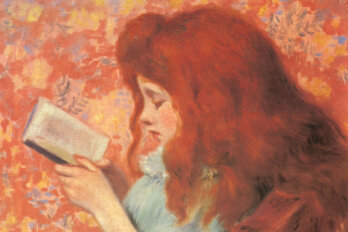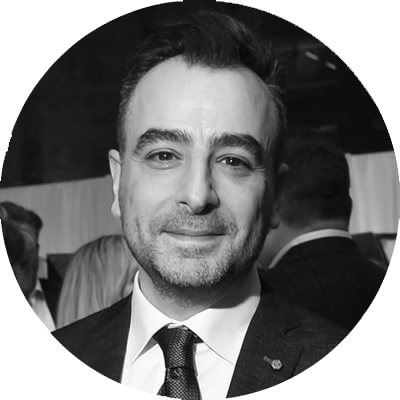BOOKS / MARCH/APRIL 2025
Can Rayne Fisher-Quann Shift from Internet Princess to Bestselling Author?
The publishing industry is hinging its hopes on a twenty-three-year-old with a Substack and a devout following. Can she deliver?
BY ARIELLA GARMAISE
PHOTOGRAPHY BY ALBERT HOANG
Published 6:30, FEBRUARY 5, 2025
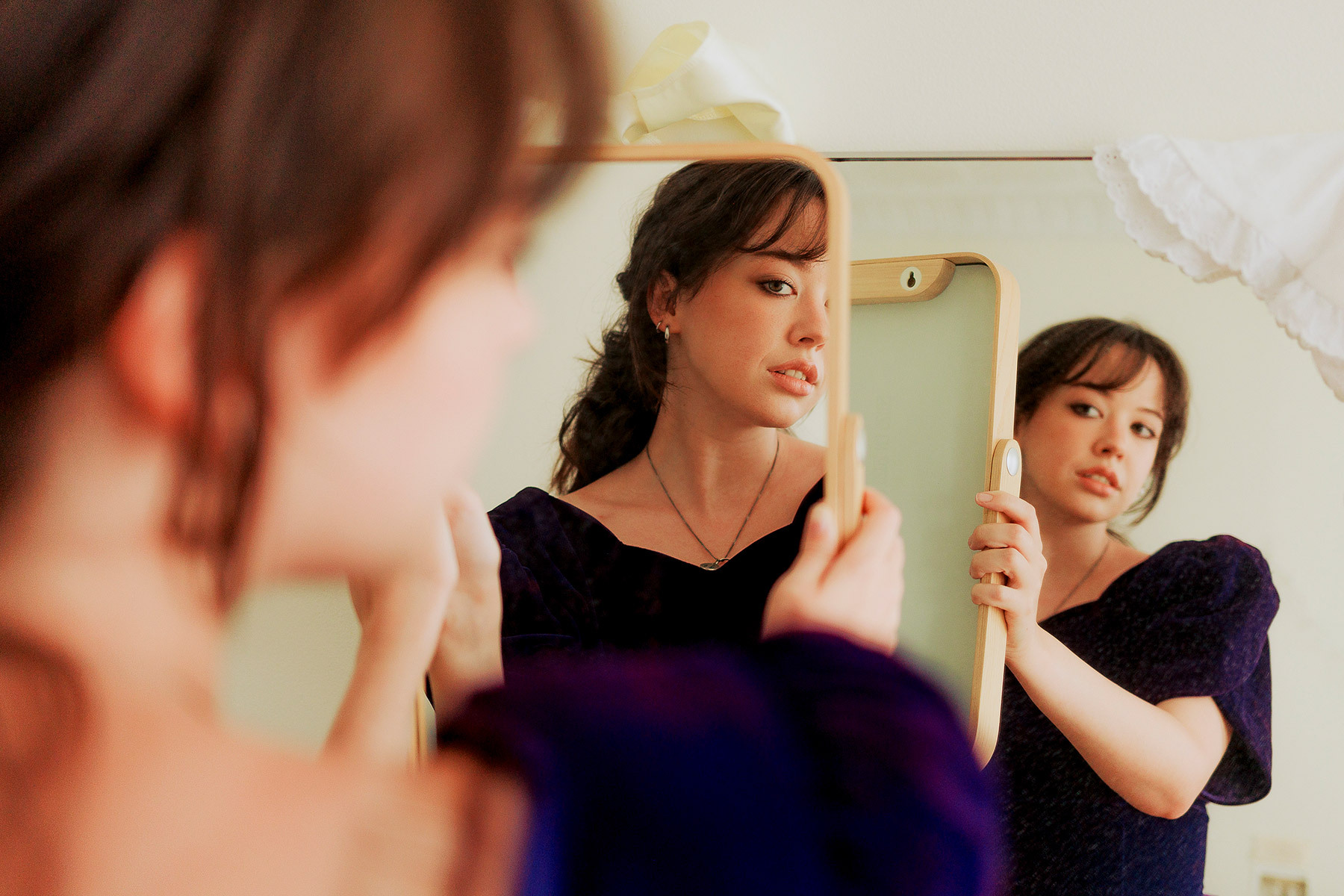
On an apocalyptically sweaty June evening, hundreds of twenty-somethings line up around Manhattan’s Holy Trinity Lutheran Church. Making the pilgrimage to the Upper West Side from the greater Bushwick area, the acolytes appear largely to be women and their gay accomplices. Tickets had sold out online in four minutes. “We should have gotten backup,” a security guard complains to me as over 400 guests spill into the pews, though I point out that it doesn’t seem like an especially rowdy crowd. An organist breaks into Madonna’s “Like a Prayer,” and up to the pulpit walks twenty-three-year-old Rayne Fisher-Quann.
Rayne has forged a career I can’t for the life of me explain to my parents. She parlayed a more than 260,000-strong TikTok following and a freelance writing career into the juggernaut Substack titled “internet princess,” which currently has over 100,000 subscribers. In 2023, Rayne landed a lucrative book deal, the kind of which only a handful are made each year, with Knopf. She is working on a collection of essays titled Complex Female Character.
Rayne, who writes about politics, culture, and relationships from a feminist perspective, is often at the centre of viral discourse, weighing in on subjects like the re-emergence of girlish pinks, for example, or what it means to be a literary it girl (a woman who has connections to both fashion and publishing houses; with the support of Knopf and Miu Miu, which occasionally loans her items, Rayne has it). Her fans include the supermodel Emily Ratajkowski, Saturday Night Live’s Bowen Yang, and pop stars Zara Larsson and Hayley Williams. When she announced that she was hosting a talk titled “Girl, Online” at McGill University in 2023, nearly 400 students tried to claw their way into a lecture hall that seated only 175 people.
At the church, the six other writers Rayne has invited, all of whom have grown sizable followings of their own on the internet, are getting set to read original essays on something they’ve never told anyone else. Before the readings begin, Sophia Efthimiatou, Substack’s head of writer relations, takes Rayne’s place at the altar, standing in front of a portrait of Jesus flanked by angels. “Start a Substack,” she almost winks at the crowd. “You may find yourself one day hosting an event just like this one because of it, like Rayne did, with your true fans and confidants: your subscribers.”
The writers and readers are scrambled, though the audience has developed such a parasocial familiarity with the readers that many can easily identify the author of each secret. The confessions, most of which are hardly salacious, are not supposed to leave the church. When they are over, a line to meet Rayne forms down the aisle stretching out the front doors. Though the church crowd is not rambunctious, there’s a vibrating danger to their adoration: they want to read Rayne, they want to meet Rayne, they want to be her best friend, and one day, they want to be her.
Two twenty-year-old women drove for hours from Connecticut to attend the event; one of them tells me she made a Substack that day just so that she would have something to tell other people in line about. She gives me her username and asks me for mine. (I don’t have one, I tell her. Should I?) Another fan flew in from Los Angeles that morning and is flying out later that night. Another asks Rayne out on a date. One hands Rayne her notebook and asks if she’ll draw something, and Rayne sketches her portrait.
Rayne has enormous green eyes, a mop of Zooey Deschanel dark hair, and full lips like a Bratz doll. At the event, she is wearing a tomato-coloured dress gifted to her by its designer, shoes and a purse she borrowed from Miu Miu, and a chain-mail headpiece. She has been dubbed the “voice of her generation,” a Lena Dunham of sorts. She’s the Tavi Gevinson of Substack. She’s the internet’s Susan Sontag. She’s a young woman, and not the first, with a burgeoning talent and a devout following that the beleaguered publishing industry has hinged its hopes on. For the crowd that has gathered at the church, she is in the most enviable position they can imagine, graciously greeting her adorees, about to publish her first book for a massive amount of money. Now comes the hard part: Rayne has to deliver.
Rayne and I meet in her Williamsburg railroad apartment (“on a street of 1,000 creative directors,” she jokes). The apartment is filthy. Or it’s nice, and Rayne’s decorated it nicely, with paintings and books and crosses and rosaries and other Catholic paraphernalia, but it’s a disaster. We go to her room, where she moves a pile of dirty clothes off a golden Victorian couch for us to sit. She adds the clothes to a larger mound on the floor. Scattered elsewhere on the floor are a bra, a stray hairbrush, and The Mindfulness Workbook for OCD. “I didn’t get the OCD that makes you clean,” she explains.
My perspective is not one of judgment or that of a clean person. But this isn’t the same as a friend dropping by last minute—Rayne knew I was coming. The piles of clothes and makeup are exhibitionist. Look how gross I really am. And Rayne has built a career inviting readers into the messy tangles of her mind, daring them to love her anyway.
Rayne writes how she speaks: fast, with a witty irreverence, and always an undercurrent of sincerity. She often works in single bursts, staying up all night to finish a draft. Writing is a somatic experience for her; she shakes and sweats and it’s hard for her to eat. Her use of a conversational lowercase—once exclusive and now more occasional—has the effect of reading a long text from a friend, one you might screenshot for posterity. “i am sleeping at erratic hours, i am sobbing, i am writing and never publishing,” she writes in the essay “standing on the shoulders of complex female characters,” on which the title of her book is based. “even when i am ostensibly at my lowest, i am still filtering my experiences through the eyes of a consumer; the desire to editorialize our own experiences (to romanticize the unseen, to live for our biographies) has become an autonomic facet of womanhood as unavoidable as breathing.” Sometimes she’ll hedge that a particular essay is not one of her best; typically, her audience disagrees in the comments section. These interventions give the sense that the reader is involved in the process of crafting her work, that Rayne is inviting you into the intensity of her mind, certain that you’ll recognize the universal truths of girlhood through which you have also suffered.
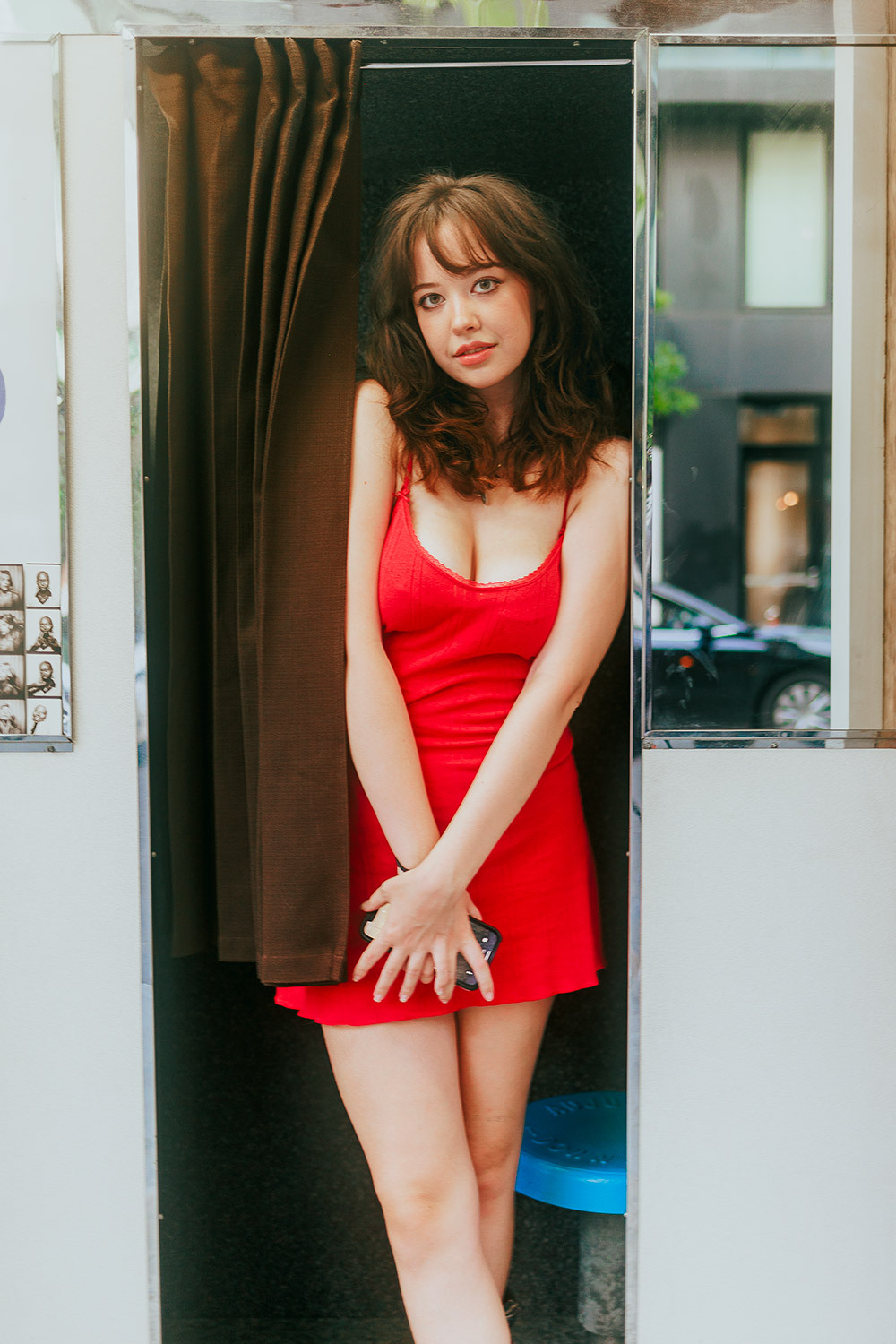
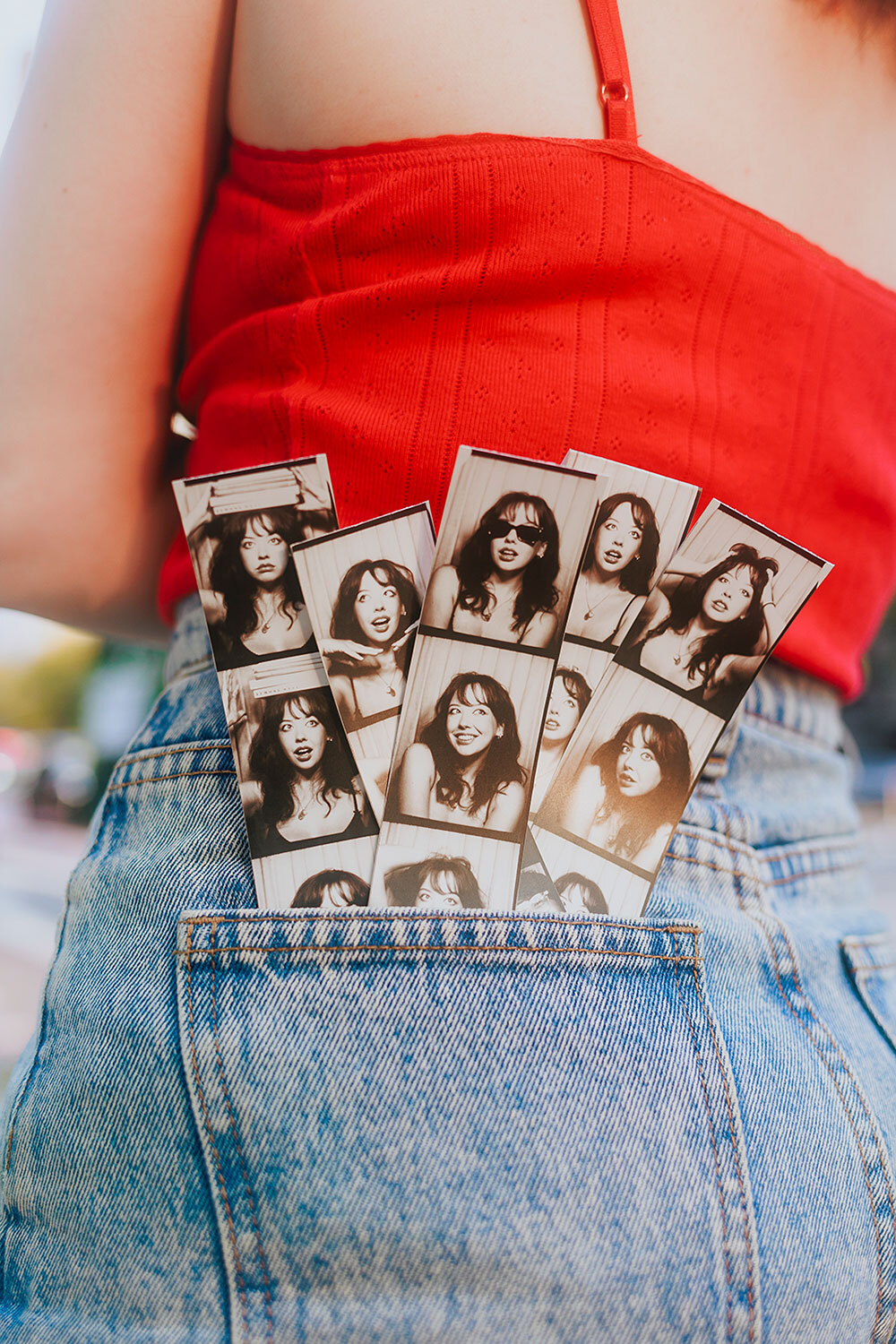
When a flurry of online attacks was launched against Amber Heard following her domestic abuse trial against her ex-husband, Johnny Depp, in 2022, Rayne published one of the internet’s loudest pro-Heard defences. “There is something phenomenally painful in watching a material backlash erupt in response to [the MeToo] movement that was never allowed to be anything more than aesthetic.” Her writing threads glimpses of personal pain with meditations on feminism and its commodification; she might pull from Walter Benjamin or Mark Fisher or any number of academics whose work she feels escaped her during her short stint in undergrad and whom she’s had to seek out independently. Unsurprisingly, for a writer of twenty-three, her world view is still very much in flux. Not every essay is revelatory—not every essay can be. It’s her willingness to grapple in the open and the flashes of brilliance in her prose that have built Rayne’s celebrity.
I ask Rayne how she decides what to keep for herself in her essays. She points out that nothing she writes is particularly revealing. In “home for the holidays,” for example, she offers meditations on grief without ever naming who it is she is grieving. You get the refraction of a feeling without any identifying details—a reference to a boyfriend here, allusions to trauma there. I can finish reading a piece feeling like I know her so much better than I actually do. Her most personal essay, I find, is one in which she never mentions herself. “What does it mean to get ‘woman’d’?”, published in 2022 in i-D, is about the online public’s penchant for eviscerating women they once exalted. “It starts with adoration,” Rayne writes. “She’s new and young and profitable. Then the idolatry begins. Maybe magazines start selling copies by calling her the voice of a generation.” But a rise necessitates a fall, and soon, the starlet’s fate turns. “She’s well on her way to overexposure,” she continues. “The jokes that people found charming six months ago are starting to get old, and you’re being force-fed her face through every algorithmic channel your phone can handle, and wasn’t she always kind of annoying, anyway?”
“Woman’d” is a popular term Rayne coined for the phenomenon when “everyone stops liking a woman at the same time.” “Many women with large audiences have begun to explicitly stress to their followers that they’re imperfect, flawed, and don’t wish to be idolized,” she writes in the piece. I imagine her sitting down with this essay, sweating and shaking. “They know, consciously or not, that their dehumanisation as women doesn’t begin when they inevitably falter from the pedestal they’ve been placed on—it begins when the pedestal is built in the first place.”
Rayne grew up in Toronto’s east end, in a progressive home, attending alternative schools. The household was hyperliterate—both her parents, Valerie Quann and Jason Fisher, worked in education and believed that children are capable of understanding far more than they are given credit for. Valerie stocked the bookshelves with the Little Feminist Board Book Set and then bell hooks when her children grew older. Rayne learned to read when she was three; at four, she was trying to pepper words like “perspective” into conversations with her parents. “I think this is embarrassing,” she insists, “and it’s not an indicator of intelligence. It’s an indicator of early narcissism.”
When Rayne was just seven years old, Valerie needed a liver transplant due to the same rare disease that had killed her sister eighteen months earlier. The surgery was successful, but Valerie’s health never completely stabilized. When Rayne was eleven, Valerie had a grand mal seizure, and Rayne, who was partly pinned beneath her mother, had to call for help. “It was one of the worst things that’s ever happened to me,” Rayne says.
Succeeding in school became a way for Rayne to give her parents one less thing to worry about. These early elementary years were also around when her OCD symptoms started to manifest. Rayne, whose grandparents were devout churchgoers, developed compulsions around prayer. “OCD basically is Catholic disease,” she tells me, and the ritual provided comfort that everything would be okay. “I was praying that my mom wouldn’t die, and praying that my dad would be happy again, and then also praying that one day I could write a book.”
She was exposed to glimmers of the spotlight as a child, travelling to Los Angeles with her best friend, who starred in a Nickelodeon show. But Rayne’s own first brush with fame was as a high school activist. After Doug Ford’s government announced a plan to repeal Ontario’s progressive sexual education and Indigenous education curricula in 2018, Rayne worked alongside other organizers to stage a walkout of tens of thousands of students across the province. Her picture was plastered in the Toronto Star and Vice. There was huge support for the movement, but Rayne’s parents say detractors on social media were quick to comment on the length of her denim cutoffs and to insist they’d listen to her if she looked more serious. “I think I had this fantasy that I could just be treated like a brain in a box,” she tells me. “That I could be so smart that no one would think about how I was looking.” She abandoned her hopes of writing and set out on an unimpeachably serious career path as a physicist, enrolling at the University of British Columbia for an honours math and physics degree.
Her time at UBC didn’t last long. The pressures of being one of the only women in a male-dominated department mounted with the recurrence of a mental health crisis. Ahead of her second semester, Rayne decided to drop out. She told her parents that even though she had left school, she wasn’t coming home. She wanted to be a writer, not a physicist. I asked her if her parents begged her to re-enrol the following semester, or to spend some time in Toronto at least, but they were supportive.
“I mean, when people think you’re gonna kill yourself, you can get away with a lot of stuff,” she says wryly. “Write that down.”
After seeking treatment, Rayne endeavoured to make it as a freelance writer. Michael Hollett, co-founder of Now magazine, took note. He was building staff for Next, his new magazine. Priding himself on his ability to spot emerging talent (he says he gave Naomi Klein her first journalism paycheque, for example), Hollett tells me it was “clear right away” Rayne was going to be a star. At nineteen, Rayne was the associate editor at Next, interviewing the likes of Lizzo and Caroline Polachek for the magazine’s covers. Meanwhile, she was finding success on TikTok. She first posted on the app in 2020 and soon became known for her concise dispatches on feminism, the commodification of girlhood, and the TikTok dramas of the day. Photogenic, preternaturally charismatic, and hyper online, Rayne managed to amass over 250,000 followers. But she quickly sensed that the platform was becoming oversaturated. And not only was she limited in what she could say in such short videos but all of her content could be used by a third-party conglomerate. She invested more time in Substack, where she writes thousands of words on topics allotted only a few minutes on TikTok. (She no longer posts on the app at all.) The message was clear: Rayne was confident that her audience of young women, a demographic so often underestimated, was capable of reading pages and pages of writing. And they did.
There’s an arc in HBO’s Girls, a show Rayne has discovered after years of Lena Dunham’s cultural exile, where protagonist Hannah Horvath’s dream comes true: she gets a book advance. But her deadline is tight and the pressure is overwhelming. Her OCD flares up, and she distracts herself from writing by sticking a Q-tip as deep into her ear as she can and chopping zigzagged bangs. She’s left to write the book in a day. I bring up the plotline with Rayne.
“That’s a tough episode for me to watch,” she admits. We’re melting on that gorgeously impractical Victorian sofa. Rayne has an air conditioning window unit, but it rattles too much to record the interview, so we’ve chosen silence and sweat.
“When people hear ‘twenty-one-year-old with a book deal,’ there’s a lot of assumptions that they make about the book. I want to be able to prove people wrong.”
Rayne earns a regular income from posting on Substack, but after publishing “home for the holidays” in January 2024, she went silent. At the end of April, she finally logged on to share that she had decided to temporarily pause paid subscriptions. “My (famously precarious at the best of times !) mental health deteriorated to the point that I recently had to seek emergency psychiatric care, and I’m very happy to say that I’ve been getting incrementally better and hope to continue that way,” she wrote. “but, of course, the whole experience (along with the circumstances that preceded it) has seriously affected my ability to work.” She didn’t resume posting essays until October, and says she gained nearly 10,000 followers during her hiatus.
As her image proliferates, Rayne’s looks are never far removed from the discourse about her success. “There’s always a conversation about if I’m pretty, or if I’m famous because I’m pretty,” Rayne says. “It’s like on TikTok, if I were to call myself ugly, everyone would be like, fuck you. You need to acknowledge your pretty privilege. And if I said I was pretty, they’d be like, you’re an ugly dog.”
There has been online gossip about how much money Rayne made from her book deal, a secret Rayne has opted to keep. A 2023 Air Mail article on the ungodly advances handed to debut authors name-checks Rayne. The subhead: “Publishers are handing out six-figure book deals to young, debut authors. How long can the bubble last if nearly all of them are losing money?” There’s pressure not only to outsell an advance—a nearly impossible feat in today’s publishing landscape—but to surpass the flimsy expectations of overpaid young authors. “I got this book deal when I was twenty-one, and I didn’t go to college. I’m not delusional,” Rayne says. “When I was doing all those meetings, I literally said explicitly, ‘I need to make sure that what I’m putting out is good, and I don’t want you to publish anything I write unless it’s good.’”
A book deal, with its attendant deadlines and editors, is daunting for a writer used to self-publishing. And she is bracing herself for the vultures. “When people hear ‘twenty-one-year-old with a book deal,’ there’s a lot of assumptions that they make about the book,” she tells me. “I want to be able to prove people wrong.”
This is Rayne’s first book, and it’s my first profile; maybe a profile is naturally an obsequious form, and to pay such close attention to someone is to fall in love a little bit. I’m yet another acolyte. I think she’s got it. And I think if anyone has the disposition to weather the tumult of fame, it’s Rayne.
There are many ways in which Rayne seems completely unchanged by it all. When she and her boyfriend first started dating, she tells me, he asked her if she worried about losing herself in a relationship. “I was like, I literally can’t get away from myself,” she says. Her debit card is often declined at the grocery store, but it’s no longer because she has insufficient funds—she just hasn’t gotten around to figuring out American banking. (She still doesn’t have a credit card, she tells me, a revelation I find so anxiety inducing that I suggest we go to the bank and pick one up.) She has never had a sip of alcohol, she doesn’t do drugs, she doesn’t even drink coffee—her only vice is the herbal cigarettes that her father insists to me are still cigarettes.
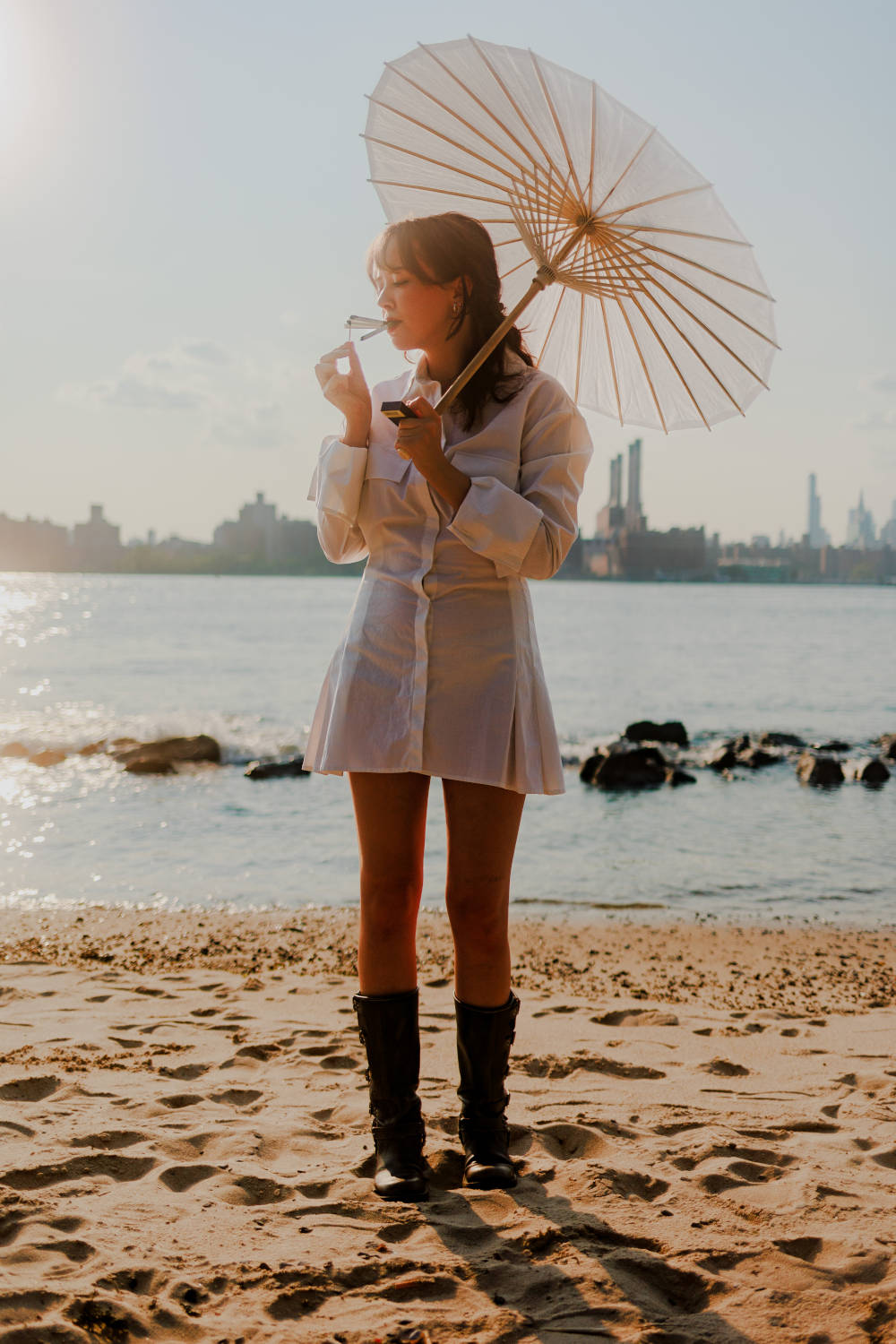
Rayne’s world is set to rapidly expand yet again: in addition to the book, she’s put out feelers for a college tour, to massive response. She’s signed with a television agent and is working on a pilot loosely inspired by her relationship with her mom; she has started doing stand-up to get onstage experience. She has rubbed against the serrated edges of fame—she has been stalked multiple times, she tells me—and yet still seems to view her platform as a way to get to know people. If the internet’s default mode of ironic detachment has only further atomized us, Rayne is dedicated to piercing the veil with sincerity. Her essays are at their best when she punctures that distance between the reader and the screen, like when she scribbled the portrait of the woman at the reading; she sees her audience in a way no one else can.
Eventually, we decide to leave the apartment, and though it’s just as hot outside, at least we can grab ice cream (the bank has long closed). With two mint chocolate chip cones, we walk through the park to sit at a sliver of sand which overlooks the Manhattan skyline erupting from the East River. One thousand creative directors have the same idea as us, but it’s a nice enough view that it doesn’t matter if it’s corny. I ask Rayne if she still worries about being woman’d.
“I’m not so full of hubris that I think that it’s a given that everything I have now is going to last forever,” she says. “People on the internet, they think they’re God, like they’re never going to die. And I think that I could die.”
Some months later, I am back in Brooklyn. Rayne and I have a media party to attend—the reason I’m in New York to begin with, to go to parties like these—where New Yorker staff writers Jia Tolentino and Doreen St. Félix are going to be mingling alongside other acclaimed authors and media personalities.
Rayne and I check in at the door. We’re both on the list, but she gets a wristband and I don’t. “What does that mean?” I ask the woman crossing off our names. She tells me I can’t access the more exclusive second floor. “Can’t she if she’s my plus one?” Rayne pleads. “A lot of plus ones have asked for wristbands,” the woman explains, “but there aren’t enough.”
I try to sneak upstairs alongside Rayne, but a bouncer asks me to pull up my jacket sleeve. Rayne is tethered to me and the rest of the first-floor losers.
Rayne eventually finds someone working the event who has a dozen wristbands in her pocket. At first, I’m impressed by Rayne’s ability to open doors on command, until it occurs to me that it is in fact she who is doing them a favour: they want her on the second floor. Rayne is at the helm of the publishing industry’s Gen Z cohort. She has what they’re searching for. Finally, I follow Rayne up the scaffolding so that we’re overlooking Brooklyn, a few steps behind as we open doors that let out a rush of warm air and enter the vast unknown of the second floor.



